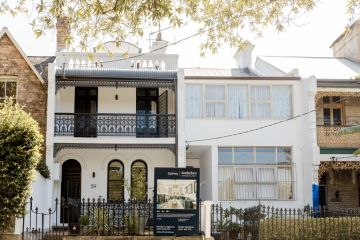‘Stood us in good stead’: Do home buyers really need a 20 per cent deposit?
The share of home buyers with small deposits has dropped over the past four years, providing a buffer for households while interest rates rose and the property market entered a downturn.
A deposit of less than 20 per cent usually requires lenders’ mortgage insurance, or a government guarantee to waive the LMI – set to be expanded to more first home buyers under Labor’s policy announced last weekend.
Experts say the requirement helps first home buyers avoid a situation where they lose their job while property prices are falling and need to sell their home for less than the loan, leaving them with a debt.
But in an era when sky-high housing prices mean saving a 20 per cent deposit has become a steep hurdle, economists are open to other measures to protect home buyers, such as checking if they could still repay their loan if interest rates rose.
In the December quarter, 30.9 per cent of new loans to owner occupiers were to borrowers who had a deposit of 20 per cent or less, figures from the Australian Prudential Regulation Authority show.
That has fallen from a recent peak of 45.7 per cent in the December quarter of 2020, when interest rates were ultra-low and investors were less active.

Canstar data insights director Sally Tindall says home loans to borrowers with deposits of at least 20 per cent are seen as lower risk by the banks and bank regulator, although some offer exemptions such as for medical professionals.
“It means if you hit a bump in the road, you’ve got a decent amount of equity in your loan to fall back on, but also if property prices took a slide you wouldn’t fall into negative equity quickly,” Tindall says, citing examples such as a job loss or taking time off work to start a family, but she notes it is uncommon that banks foreclose.
Before the 2008 global financial crisis, some banks lent on sub-5 per cent deposits, but lending standards were generally lifted after the GFC and the financial services royal commission.
“That has really stood us in good stead,” says Tindall.
Since the recent peak in low-deposit lending, there was a further period of lockdown and then a string of 13 interest rate hikes.
“The fact that these rules were in place had made sure a lot of these borrowers were able to keep the monthly mortgage repayment up.”
Corinna Economic Advisory principal Saul Eslake says deposits traditionally guard borrowers and lenders against negative equity, and show a bank that a borrower has the ability and discipline to service a mortgage.
He says there was a period of intense competition among lenders in the mid-1990s and early 2000s pre-GFC that meant a loosening of lending standards.
“You had loans being made in excess of 100 per cent LVR and zero deposit, and given how that blew up [in the US in the GFC] almost certainly the banks of their own volition, let alone being nudged by APRA, would have said ‘maybe this isn’t such a good idea’,” he says.
Eslake says having a 20 per cent deposit may help protect borrowers, but it is difficult to raise one without rich parents or a six-figure salary.
“I think the best way to reduce the deposit gap would be to stop doing things that push house prices up,” he says.
AMP chief economist Shane Oliver says it is not unusual for Australian property prices to pull back about 5 per cent, but a 20 per cent drop was rare, so a standard deposit means less chance of negative equity.
”You can make an argument from an equity point of view that it’s fairer that maybe for first home buyers the deposit hurdle should be lower,” he says.
“ [The scheme] helps solve that problem, the deposit hurdle problem, but it doesn’t solve the underlying problem which is house prices are excessively expensive, and the issue there is the lack of supply relative to demand.”
Australian Housing and Urban Research Institute managing director Michael Fotheringham says the 20 per cent deposit reflects a time when the ratio between house prices and incomes was different.
There are now other protections such as the requirement that banks check if a buyer could repay their loan if interest rates rose 3 per cent, he notes.

“So whether a 20 per cent deposit is really still the appropriate tool is a great question to examine,” Fotheringham says.
“The best thing we could do is have much more affordable housing available on the market, so people were able to purchase at a level that was appropriate to their budget.”
Separately, the Coalition on Sunday pledged to allow some first home buyers to deduct mortgage interest payments from their incomes for five years, which could be worth as much as $12,000 a year.
Major banks would not comment on Monday, but some mortgage brokers were unsure if the policy would allow customers to borrow more.
Angus Gilfillan, chief executive of digital mortgage broker Finspo, says that although the Coalition’s proposed tax deduction may mean eligible borrowers have more money during the first five years of their loan, he was not sure if banks would lend more and the banking regulator may not allow it.
“Theoretically, it should increase your borrowing power for a five-year period, but lenders will say ‘what happens in year six?’” he says.
Otto Dargan, founder of mortgage broker Home Loan Experts, says banks need to assess a borrower’s ability to make repayments over the life of the loan.
“When a broker assesses if someone can afford a loan, they must by law confirm the person can afford the loan over 30 years,” Dargan says. “Are they going to work with APRA to change the way that banks assess loans?”
We recommend
States
Capital Cities
Capital Cities - Rentals
Popular Areas
Allhomes
More










